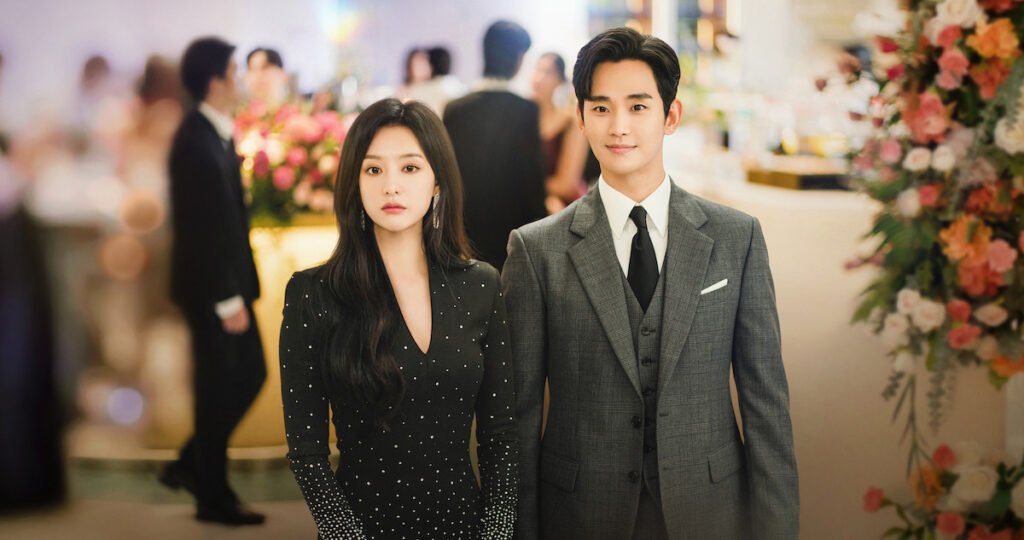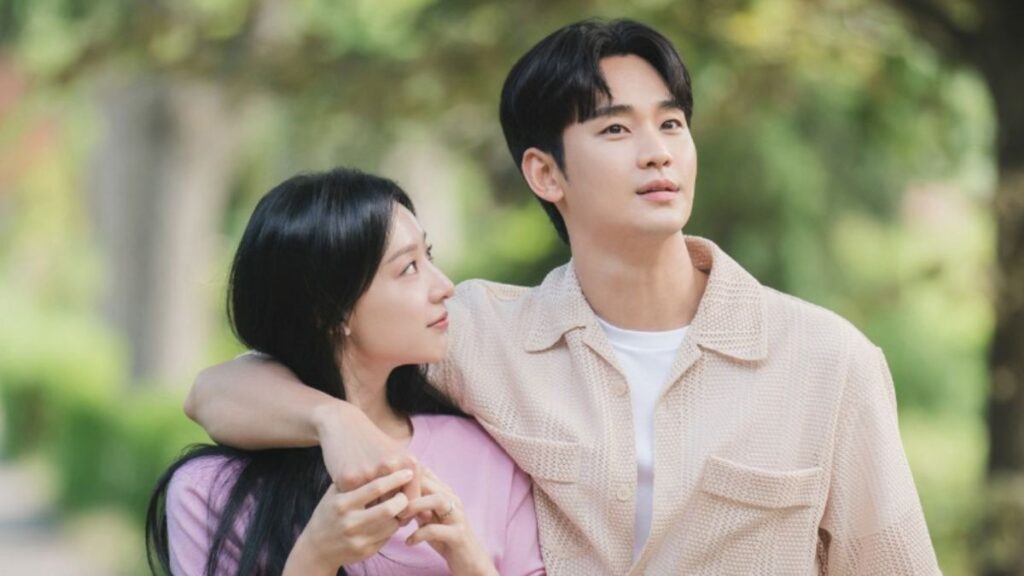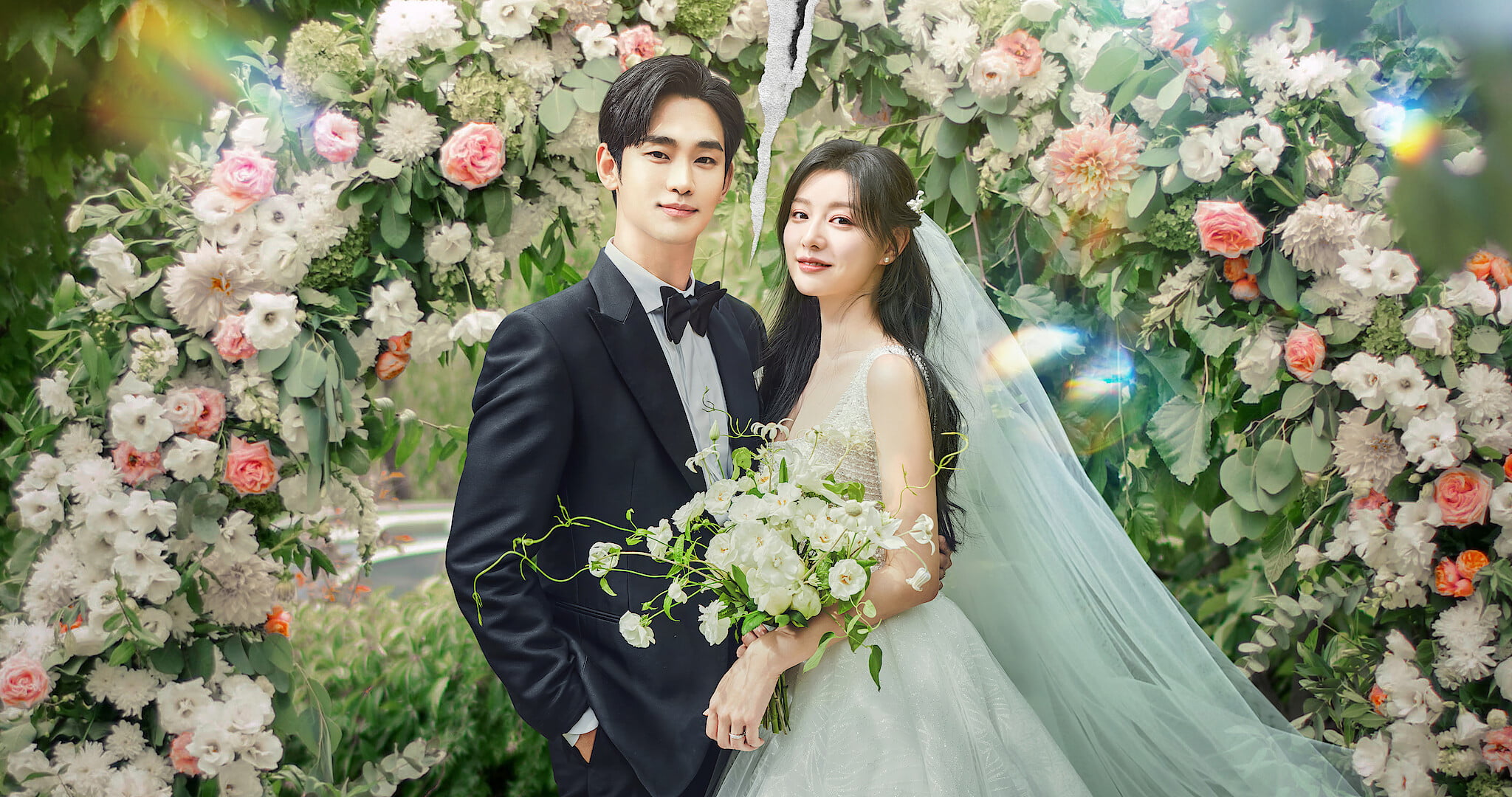The beauty of Kdramas is believed to be the swoon-worthy world of romance and their idealistic protagonists that make us dive deeper into the world of imagination. But we often find ourselves wondering about the fictional realms portrayed in Korean Dramas and how far away from reality they are.
However, the recent Queen of Tears airing on Netflix has set the bar high, with the highest number of views and ratings, and is evident to be the ideal amalgamation of novel and cliched, making the plot and the characters more relatable and authentic in its approach.
The main plot
Queen of Tears, Netflix’s latest South Korean hit, depicts a familiar scene. An impossibly attractive office worker falls for a helpless intern. Without asking anything about her, he immediately pledges his support. It’s overbearing, slightly controlling, and professionally inappropriate—but it’s K-drama! When it is revealed that she is the heiress to the same company for which they both work, he is thrust into an idealised world of lavish riches as they marry and drive off into the sunset. The most intriguing aspect of the way it is used in Queen of Tears, which reaches its halfway point this weekend, is that it has already occurred.

Three years later, Baek Hyun-woo is struggling with the reality of his marriage to Hong Hae-in, who has become CEO of Queens Group. Their relationship is falling apart due to Hyun-woo’s resentment towards Hae-in’s ambition and their lack of connection. They live separate lives and only come together to argue. The first episode of Queen of Tears focuses on Hae-in, a workaholic woman determined to achieve a sales goal of one trillion won at the department store she manages.
Despite her wealth, Hyun-woo appears to be in an unhappy relationship, which is typical of romantic K-drama stories. Hyun-woo is tired of his marriage with Hae-in and plans to divorce her. However, when she reveals she has only three months to live due to a brain tumour, he sees it as an opportunity to avoid a messy divorce and possibly inherit some of her wealth by persuading her to change her will.
Hyun-woo tries to deceive his wife into thinking he still loves her while also ensuring his family doesn’t expose his intention to divorce her. The situation is reminiscent of a comedic farce like “The Birdcage,” with Kim Soo-hyun’s humour shining through despite potential language barrier issues with Netflix subtitles. However, we realise that Hyun-woo may not be the one who is suffering in this situation, and the comedic elements start to fade.
We start to see that Hae-in is not the indifferent and resentful reflection of her family that Hyun-woo portrays her as. She is not as unemotional and strong in the face of her possible death as she appears to be. The brave front she puts up is a mask that she uses to cope with the abusive and neglectful individuals in her life, whether they are her family, rivals, or her spouse. She has been hoping for Hyun-woo to support her, but as he pretends to be there for her, we see her true vulnerable and lonely nature.
The brilliant performances of the cast
Kim Ji-won portrays this heartbreakingly, seamlessly transitioning between a facade of strength and visible fear as her condition deteriorates, showcasing her quiet vulnerability. Ji-won shines as Hong Hae-in, infusing her portrayal with equal parts vulnerability and resilience. Soo-hyun’s portrayal of Baek Hyun-woo is skilled and captivating, effectively depicting the character’s internal struggle with accuracy.

Their undeniable chemistry enhances their on-screen relationship, leading to standout performances that bring depth and authenticity to their characters. The cast in the series gives excellent performances. Each actor brings their character to life, making the show enjoyable to watch. Park Sung-hoon is particularly skilled at playing cold characters, but it would be nice to see him take on a role as a regular, romantic guy.
The forever-used idealised love trope of Kdrama
Even though Queen of Tears is a novel and revolutionary departure from the K-dramas we’ve grown accustomed to, it is still a K-romance. Hyun-woo eventually discovers the true reason behind his love for Hae-in after beginning what initially appears to be an attempt to slowly worm his way out of his marriage. It’s remarkably human, predictable, and occasionally ugly.

Queen of Tears falls short of being a perfect K-drama due to the inclusion of clichés, particularly when focusing on Hae-in’s family. The unnecessary antagonist, Yoon Eun-sung, is portrayed as extremely evil, making the already morally corrupt Hong family seem comically corrupt. Eun-sung’s character becomes conniving and boring, with his most notable trait being his desire to harm dogs. It seems that his purpose is to make Hyun-woo’s detestable behaviour seem more acceptable. However, the drama implies that Eun-sung is not completely toxic.
The story of Hae-in and Hyun-woo does not rely on typical villains or love triangle plot devices, and the series would not suffer without the character Eun-sung or shorter episode runtimes. Despite the prevalence of cliches in K-dramas, the unique and humanistic drama surrounding the main characters makes it worth enduring these tropes.
The familiarity in Queen of Tears allows for subversion to thrive. By following familiar storytelling patterns, the characters of Hyun-woo and Hae-in can break away from typical K-drama stereotypes. Specifically, the story aims to change Hyun-woo’s selfish attitude and make him realise the importance of following Hae-in’s lead.
The blend of genres in Queen of Tears
K-dramas excel at blending different genres to create new and interesting combinations. Similarly, Queen of Tears combines familiar and new elements to create a story of genuine love and real life within the fantastical world of K-drama. The unique aspect of ‘Queen of Tears,’ is its examination of complex human emotions.
The show skillfully delves into the themes of grief, forgiveness, and redemption, providing a touching examination of the meaning of love and sacrifice. As the story progresses, viewers become engrossed in a captivating and emotional web of intrigue, unable to divert their attention as the fate of the characters hangs in the balance. The use of colours in cinematography highlights the contrasting perspectives of Baek Hyun-woo and Hong Hae-in. Hyun-woo’s viewpoint is shown in a cold blue light, representing his emotional distance and coldness, while Hae-in’s world is depicted in warm, welcoming tones.
Queen of Tears is a well-crafted K-drama that evokes strong emotions. It is uncertain whether the main characters, Hyun-woo and Hae-in, have used up their miracle to find each other again. The show, true to its name, may not have a happy ending, which adds to its uniqueness. The unpredictable storyline adds to its brilliance. The performances, storyline, and exploration of love and loss make it relatable to viewers of all ages. Regardless of the ending, this show will leave a lasting impact on viewers.






